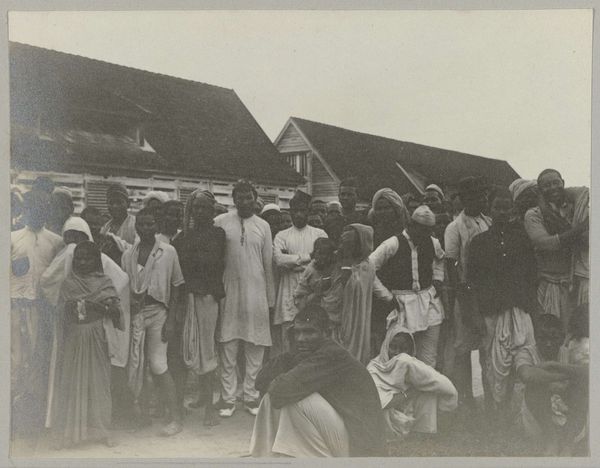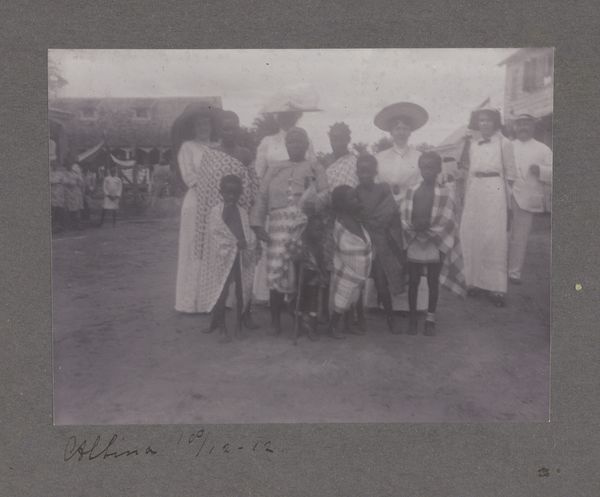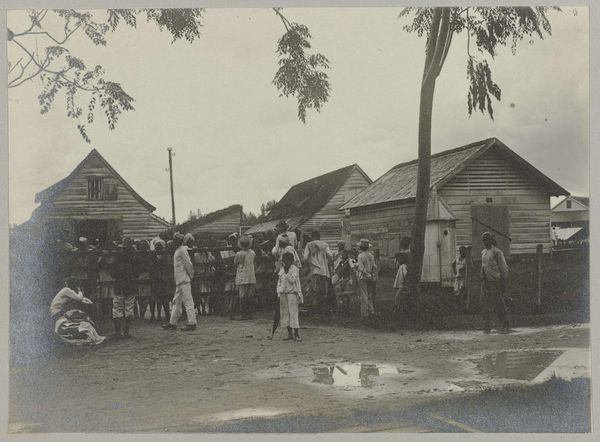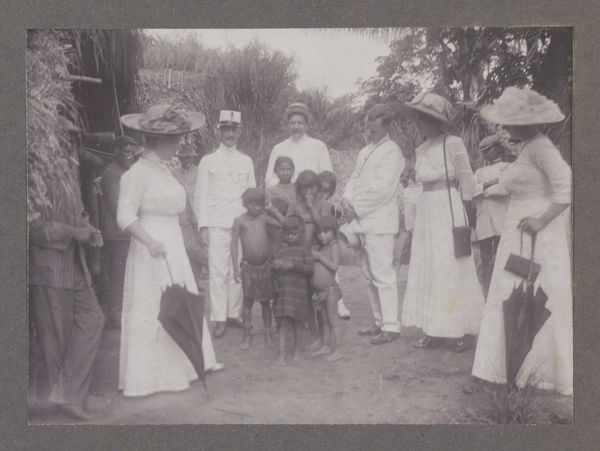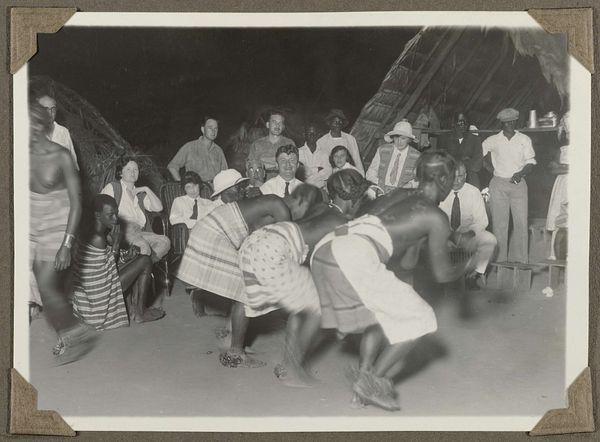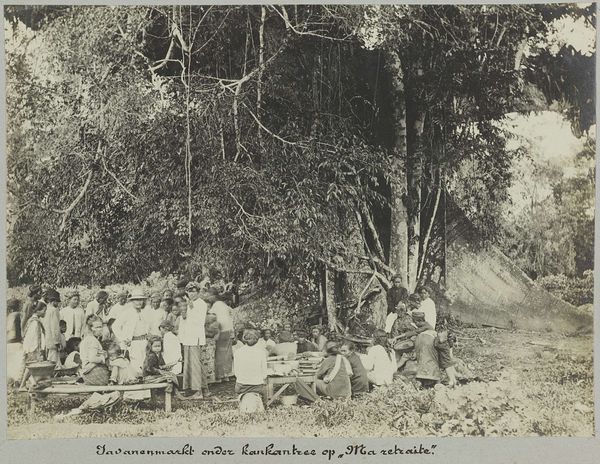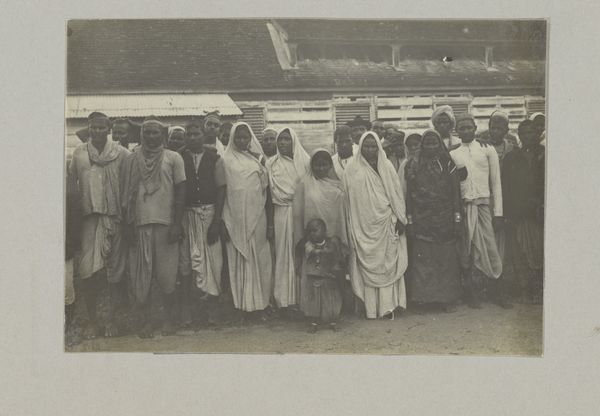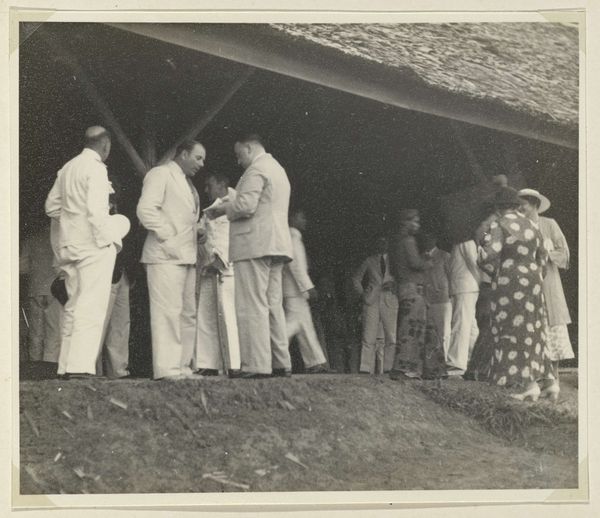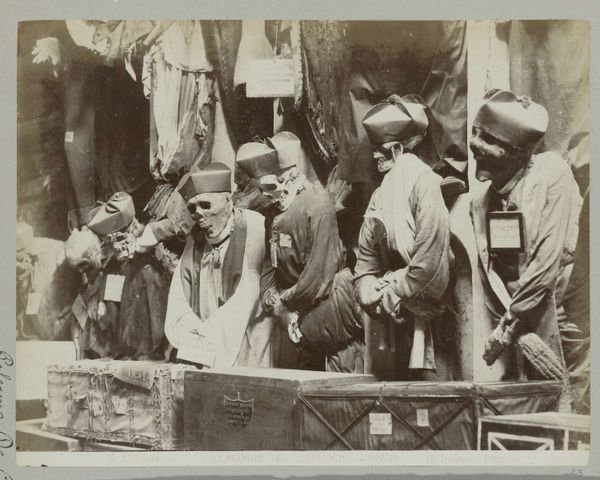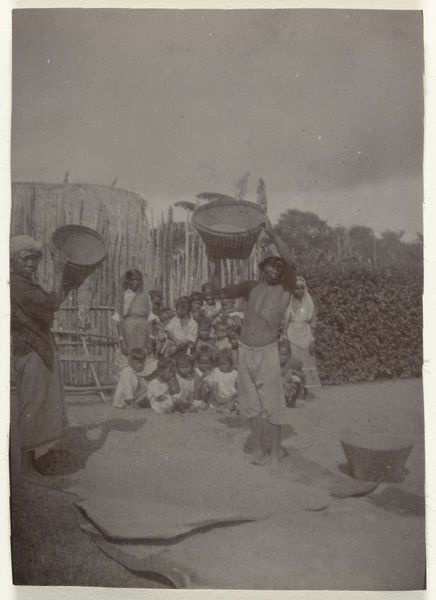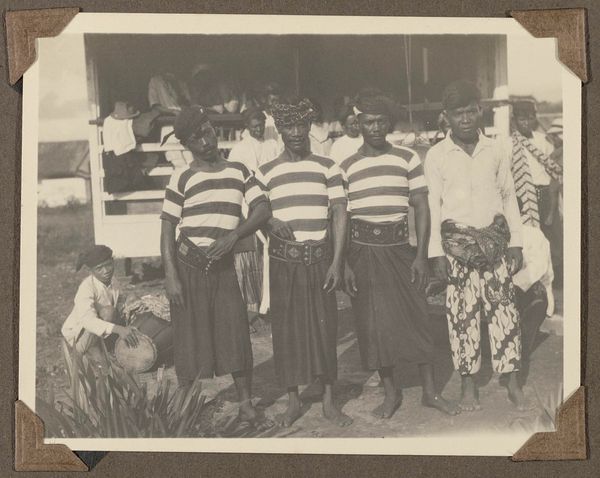
photography, gelatin-silver-print
#
portrait
#
african-art
#
muted colour palette
#
photography
#
historical photography
#
historical fashion
#
group-portraits
#
gelatin-silver-print
Dimensions: height 83 mm, width 112 mm
Copyright: Rijks Museum: Open Domain
Curator: This is a gelatin silver print titled "Groep Nederlanders op bezoek in een dorp van Marrons," which roughly translates to "Group of Dutch People Visiting a Maroon Village." It dates from 1925-1927. The photograph depicts a gathering in what appears to be a village setting. What strikes you first about it? Editor: The composition immediately evokes a sense of cultural tension and a stark power dynamic. The muted color palette enhances the solemnity. It feels…staged. Curator: The image presents an encounter between Dutch visitors and the Maroon community, descendants of formerly enslaved Africans who established independent settlements. Viewing through the lens of postcolonial theory allows us to unpack the themes of cultural exchange, representation, and perhaps exploitation inherent in such encounters. How do we reconcile historical preservation with potentially fraught visual narratives? Editor: Precisely! My eye is drawn to the contrast in dress. The Maroons, some scantily clad, are positioned around the formally dressed Dutch, highlighting an assumed authority. The thatch-roofed structure becomes an emblem – perhaps it symbolizes home, but it's also backdrop to this display. I also wonder what cultural scripts are operating: Who is looking where? How are these interactions remembered or re-imagined across generations through this singular document? Curator: That's a potent reading. What might be missed in the purely aesthetic appreciation is a crucial investigation into the subjects' agency—or lack thereof—within the photograph's creation and context. I think about intersectionality in visual culture, particularly considering the Maroon community. We also have to understand this image comes from a place and time when "photography" was wielded like a sword, both as anthropological document and means to wield, exploit, and justify unequal power dynamics. Editor: Absolutely. Consider also the cultural meanings embedded in seemingly simple things – the textiles, the postures. Each communicates, whether consciously or unconsciously, facets of identity and resistance. And that house could signify so many concepts – escape, autonomy, etc. – each carrying weight and adding layers of potential narratives. Curator: Examining such a historical artifact forces critical engagement. How do we responsibly present historical records acknowledging both their value and problematic origins? Editor: Perhaps by fostering precisely the type of nuanced, challenging conversation we’re having right now. The image persists, and our imperative is to facilitate its ethical interpretation, moving beyond the visual and embracing the vast narrative context.
Comments
No comments
Be the first to comment and join the conversation on the ultimate creative platform.
